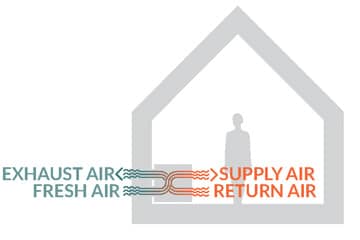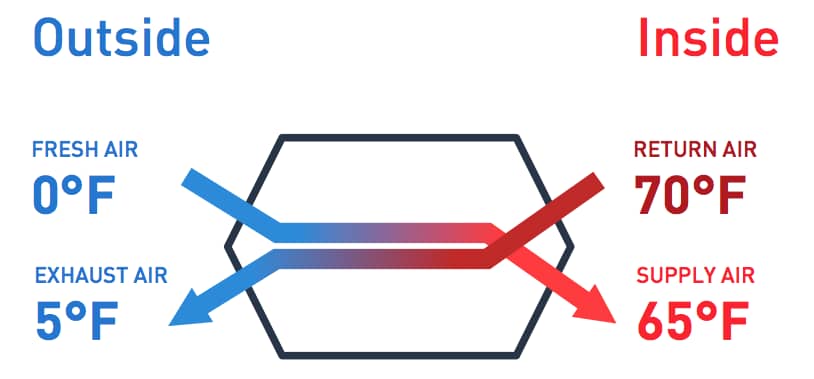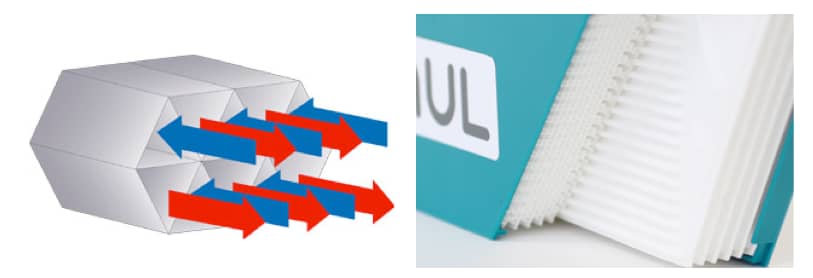
HEAT RECOVERY VENTILATION
A heat recovery ventilator, or HRV, is a fresh air system that preserves indoor warmth (or cool) inside a building while providing a 24/7 supply of fresh, filtered air to building occupants. ERVs, or energy recovery ventilators, are closely related to HRVs, but in addition to recovering heat they can also transfer water vapor between incoming and outgoing air, which is useful in avoiding over-drying of indoor air during winter in our climate.

Photo courtesy of Skylar Swinford
The old way of “ventilating” our buildings through random air leaks is not only inefficient and drafty, but also unhealthy. Poor indoor air quality is a chronic problem in conventionally-built structures. Buildings with no ventilation system depend on weather to exchange air through leaks and flaws in the building enclosure. If there’s no wind or inadequate difference between indoor and outdoor temperatures then there’s no force to refresh air in the building. The result is stale air.
Even on those days that the weather does cooperate, the source quality of incoming air is poor when we rely on the old way of ventilating. A recent Washington State University study showed that forty percent of all interior air in existing homes originates in crawlspaces and unconditioned basements – not good sources of healthy fresh air. Diluting indoor air pollutants with dirty air is counterproductive.
While virtually every building built today would benefit from a balanced, mechanical, fresh air HRV or ERV system, the more airtight the building, the better that system will perform. With this modern fresh air system we know where incoming air is coming from: a clean, filtered intake leading directly through the HRV or ERV, delivering healthy fresh air, comfortable interior temperatures, and a smaller carbon footprint.
HOW DO HRVs WORK?
Fresh intake air is (1) drawn in from outside, (2) passes through the HRV’s (or ERV’s) heat exchanger where up to 90% of thermal energy from exhaust air is transferred into the incoming air, and (3) is delivered to bedrooms and living areas. Exhaust air is (1) drawn from kitchen and bathrooms where odors, moisture, and pollutants collect, (2) passes through the heat exchanger where it shares its thermal energy with intake air, and (3) is exhausted to the outside.

Diagram courtesy of Skylar Swinford
The two air streams – fresh intake air and stale exhaust air – never mix. In the highly efficient units we use, the two streams pass through a honeycomb-like structure of thin-walled passages inside the heat exchanger that provides a very large surface area for the transfer of energy between adjacent intake and exhaust air streams.

Image courtesy of Paul Wärmerückgewinnung GmbH
BUT WHAT IF THE POWER GOES OUT?
It is not a big deal if the HRV cuts out during a power outage, as even the most “airtight” buildings are far from hermetically sealed. If it gets a little stuffy the solution is simply to crack a window or two until power is restored. The passive qualities of high performance buildings extend the “open window season” anyway, so even with a couple windows open the high performance building will be more comfortable during that power outage than a conventional building.
